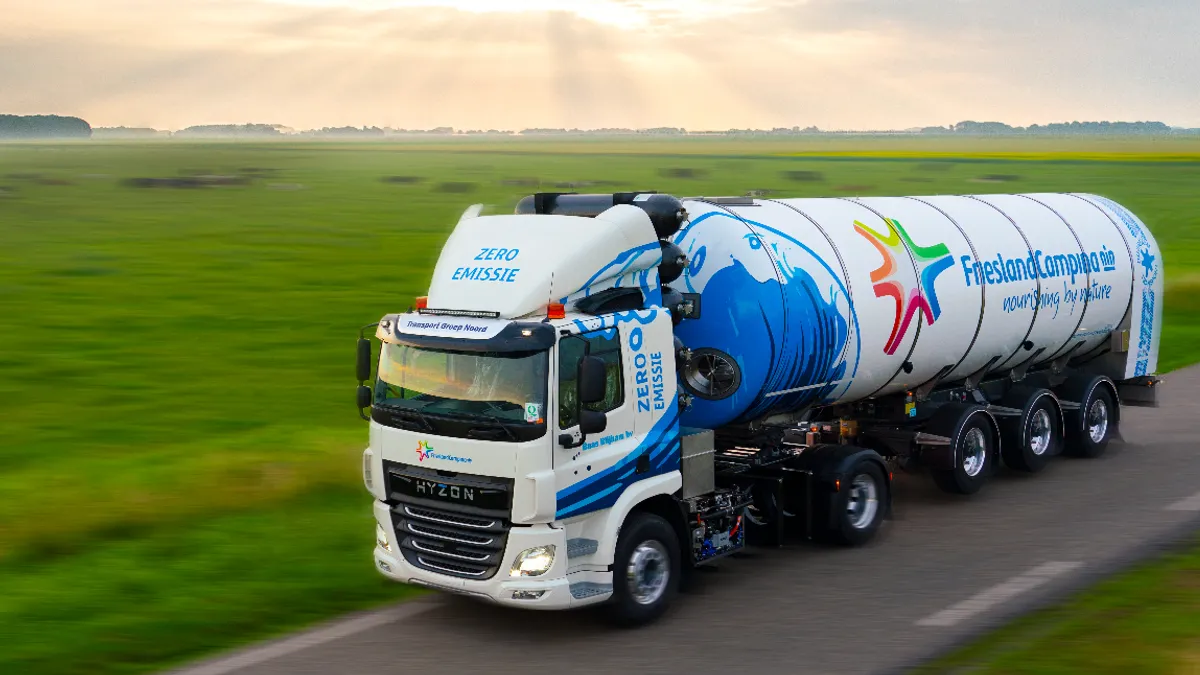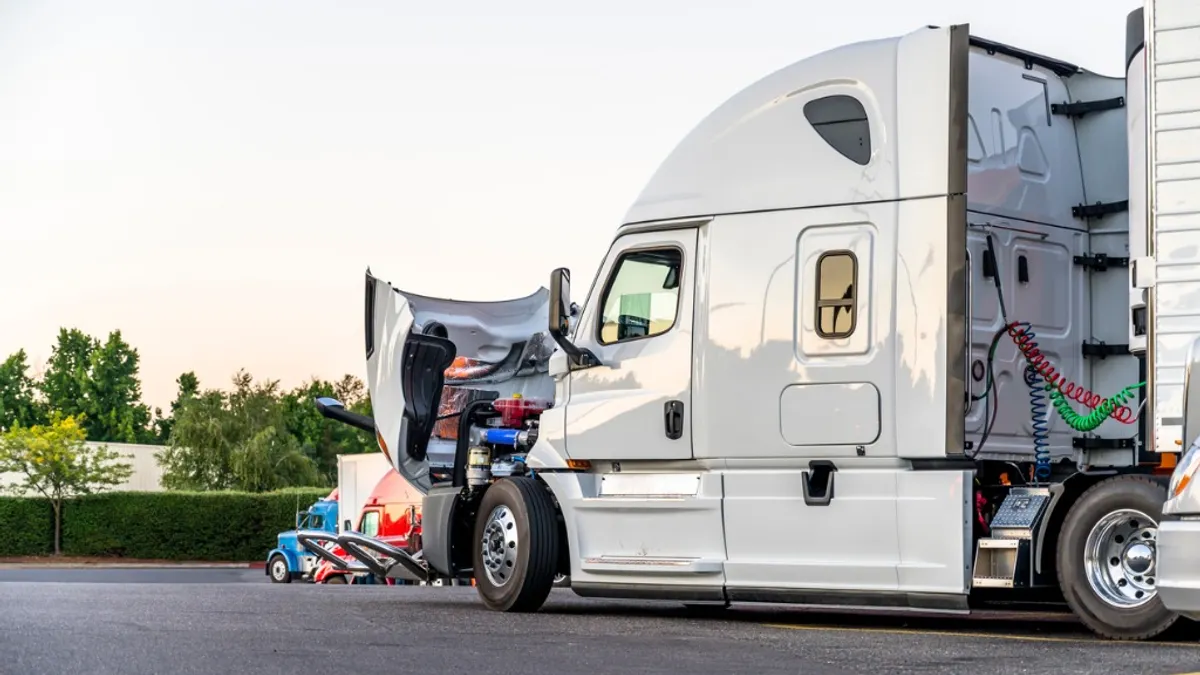Dive Brief:
- Hydrogen-truck maker Hyzon Motors began trading on the Nasdaq Global Select market Monday, the company said in a news release. CEO Craig Knight said the listing would provide access to capital, which has been a "major constraint in developing the business."
- Europe is the OEM's current focus for rolling out trucks, but Hyzon is preparing for demonstrations in the U.S. during Q4 and Q1 next year. "In the second half of 2022, we really expect some substantial uptake in the U.S. market," Knight said.
- A public listing will help bring awareness to Hyzon and hydrogen heavy-duty vehicles, the company said. Hydrogen is being adopted in other parts of the world, and the U.S. provides opportunity for more rapid adoption of the technology "than any market," Knight said.
Dive Insight:
As Hyzon works to bring its trucks off the production line, it is not targeting usage in OTR hauls. The OEM is looking to compete in regional hauls, Knight said, which is what several battery-electric truck manufacturers are targeting and already testing.
"You can do 500 miles in a day and still end up at the same point," Knight said. "[The trucks are] doing a lot of miles, but ... they're not leaving the city."
Fuel-cell electric vehicles are typically viewed as a solution for electrifying long hauls in the trucking industry. Hyzon said its fuel cells can give trucks range of up to 500 miles per fill, while battery-electric vehicles are typically thought of as having a 150-mile range, up to about 300 miles.
While OTR may be an operation FCEV operators target in the future, infrastructure remains a key barrier. A cross-country network would be needed, but it appears trucks will be ready before the infrastructure is ready.
Heavy-duty vehicles with high daily use isn't suited for batteries, Knight said. "It simply runs out of practicality," he said.
Hyzon has heard that companies that have tried BEVs in beverage transport, refuse collection, and in reefer and cold-chain logistics have run up against range and power limitations, Knight said.
But those types of hauls "are a slam dunk for hydrogen," Knight said. "We only target the slam dunks."
The pros and cons of hydrogen versus battery-electric for trucking have been at the forefront of the emissions conversation. Some OEMs are focusing on only one side ― Tesla on batteries and Hyzon on hydrogen, for example. Others, such as Nikola, plan to produce both.
Hyzon expects to deliver about 5,000 fuel-cell-powered trucks and buses by 2023 and is targeting annual capacity of 40,000 vehicles by 2025. But one important step to getting the trucks into fleets' hands will be bringing down the total cost of ownership.
Continuing to increase the efficiency of the fuel cells will help. But fuel is another big contributor to cost. Hyzon has been working closely with partners to figure out how to develop hydrogen in locations close to where the demand for the vehicles is, Knight said.
At this point, fleets must make similar decisions about how to invest, if they want to engage in partnerships early on. Hydrogen and battery-electric equipment is far from being readily accessible and adopted widely, but participation during testing phases can help fleets collect data to inform future investments.
"It gave us a chance to introduce the [electric] vehicles to our system so that we can figure out where they might fit into our supply chain," Troy Musgrave, director of process improvement at Dependable Supply Chain Services, said in February about participating in Volvo's program. "With the California regulations, it’s smart to see what’s available and collect data so that we can make good decisions."
UPS and Amazon have the resources to test hydrogen and battery EVs, though battery is more available. Charging infrastructure is more advanced than hydrogen infrastructure, and there are more vehicle models on the market to try.
However, there isn't nearly enough equipment to make the amount of impact large corporations are looking for.
"We are really waiting on the market in many instances," Thomas F. Jensen, senior vice president for transportation policy at UPS, said during a webinar in June.









